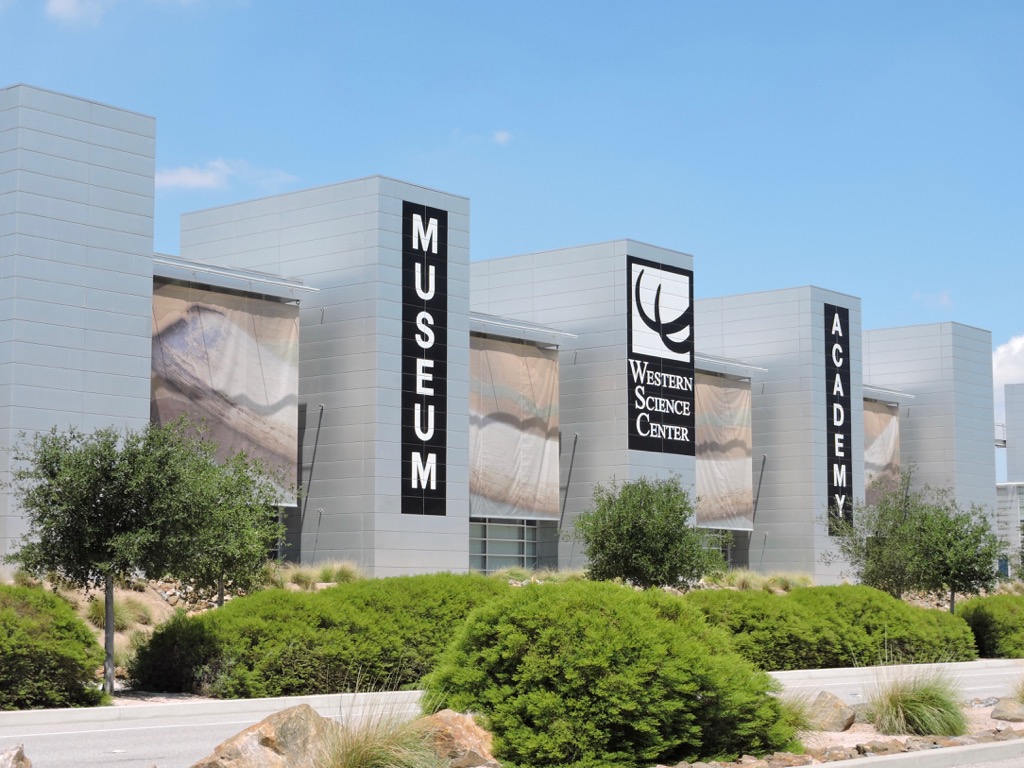 Inspired by Brian Switek’s recent article in Aeon, I was reminded of a post I wrote several years ago for “Updates from the Paleontology Lab” about different types of institutions that describe themselves with the term “museum”. What follows is an updated and edited version of that post.Over the course of my career I’ve had the opportunity to visit numerous natural history museums for a variety of reasons, as a researcher, a public lecturer, a tourist, and, of course, as an employee. The institutions are highly diverse in terms of their missions, and it’s instructive to reflect on those differences. The points I’m going to make are largely anecdotal, but should serve to give a general idea of the different types of natural history museums.During my time in Virginia, I made several visits to the Science Museum of Virginia (SMV), located in Richmond. SMV has a very large exhibit area and I was always impressed with the range and quality of hands-on interactives in their exhibits, but there were very few specimens on display.
Inspired by Brian Switek’s recent article in Aeon, I was reminded of a post I wrote several years ago for “Updates from the Paleontology Lab” about different types of institutions that describe themselves with the term “museum”. What follows is an updated and edited version of that post.Over the course of my career I’ve had the opportunity to visit numerous natural history museums for a variety of reasons, as a researcher, a public lecturer, a tourist, and, of course, as an employee. The institutions are highly diverse in terms of their missions, and it’s instructive to reflect on those differences. The points I’m going to make are largely anecdotal, but should serve to give a general idea of the different types of natural history museums.During my time in Virginia, I made several visits to the Science Museum of Virginia (SMV), located in Richmond. SMV has a very large exhibit area and I was always impressed with the range and quality of hands-on interactives in their exhibits, but there were very few specimens on display.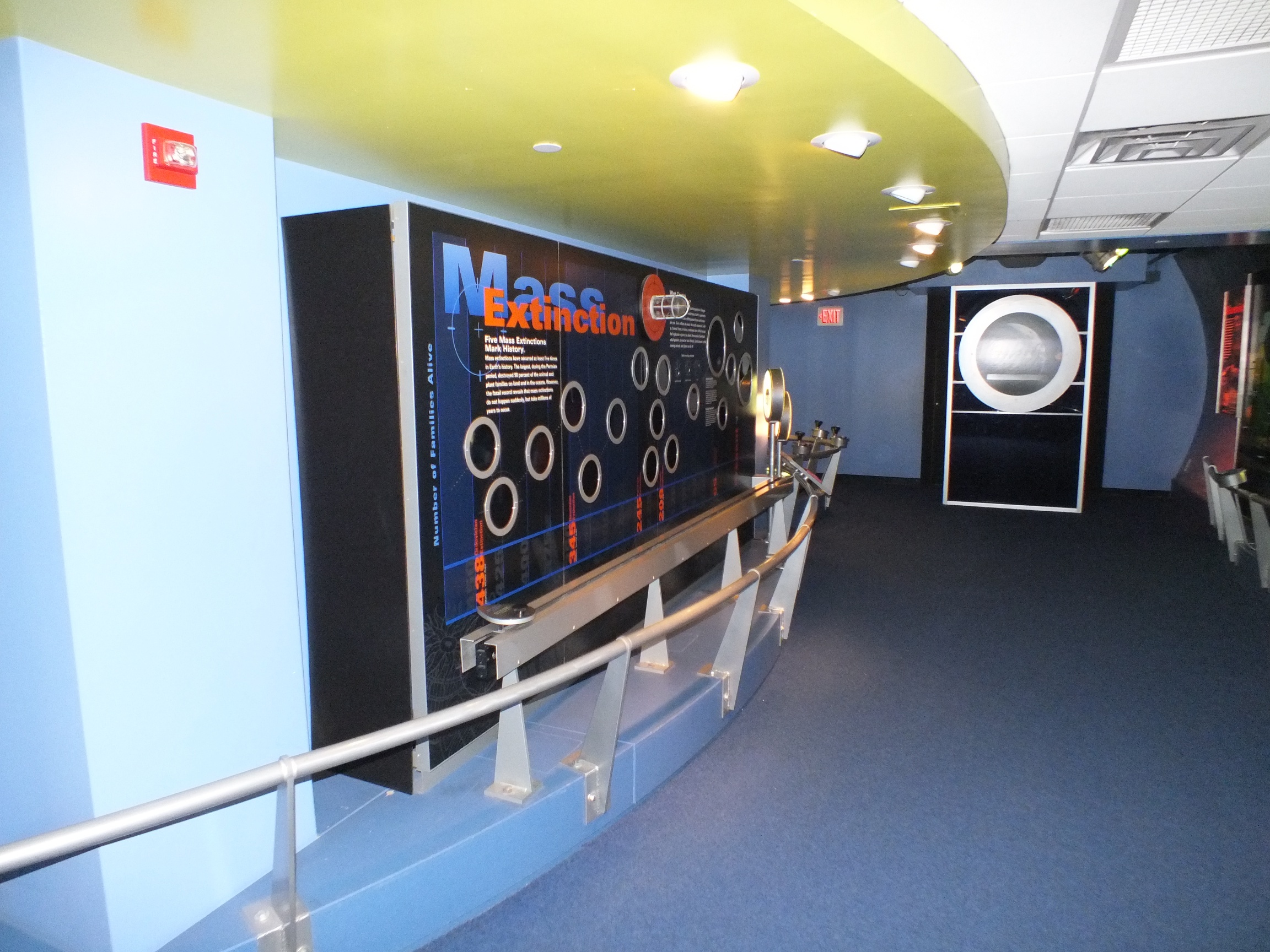 Extinction exhibit at the Science Museum of Virginia.SMV is an excellent example of a science education center. These institutions generally have few (if any) collections, and usually what collections they have are used in education rather than research. They are generally staffed by educators, with few if any active research scientists. The primary audiences are families with school-age children or schools themselves, especially elementary and middle schools, and this is reflected in the types of exhibits that are selected. This is not to say that adults can’t benefit or enjoy these exhibits - just that they are not the primary audience.A number of colleges have campus museums; two that I’ve visited recently are the Joseph Moore Museum at Earlham College and the Museum of Earth Science at Radford University. While it used to be fairly common for small colleges to maintain museums, they fell into disfavor in recent decades; fortunately they may be experiencing a bit of a renaissance.
Extinction exhibit at the Science Museum of Virginia.SMV is an excellent example of a science education center. These institutions generally have few (if any) collections, and usually what collections they have are used in education rather than research. They are generally staffed by educators, with few if any active research scientists. The primary audiences are families with school-age children or schools themselves, especially elementary and middle schools, and this is reflected in the types of exhibits that are selected. This is not to say that adults can’t benefit or enjoy these exhibits - just that they are not the primary audience.A number of colleges have campus museums; two that I’ve visited recently are the Joseph Moore Museum at Earlham College and the Museum of Earth Science at Radford University. While it used to be fairly common for small colleges to maintain museums, they fell into disfavor in recent decades; fortunately they may be experiencing a bit of a renaissance.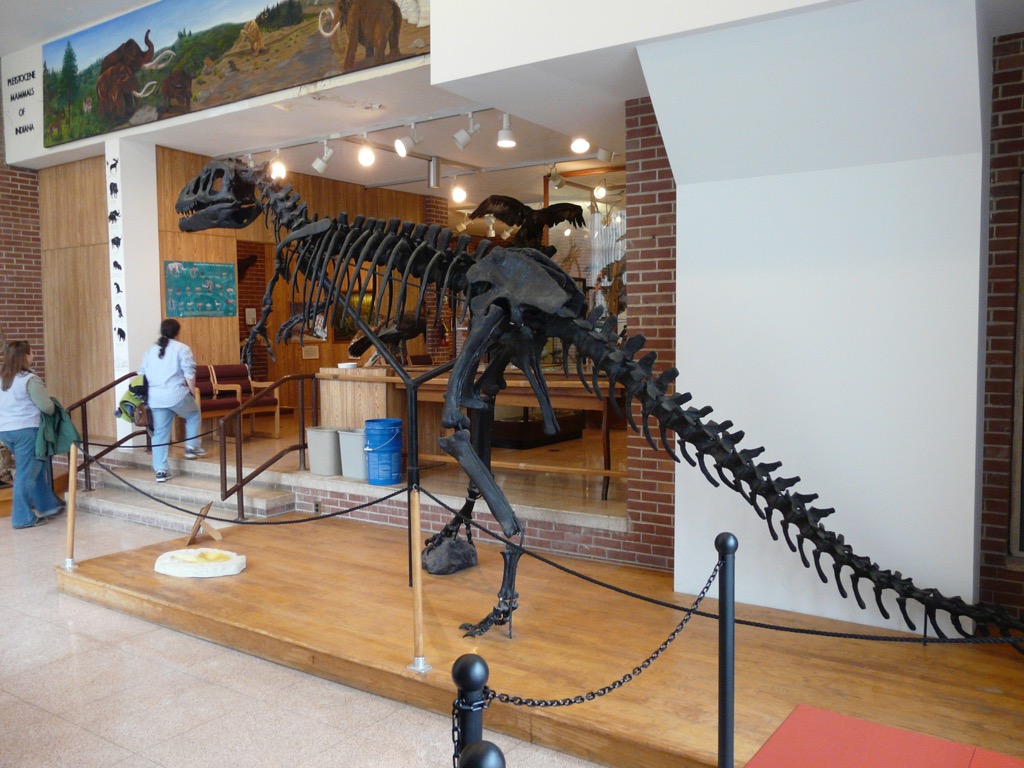 Allosaurus cast on display at the Joseph Moore Museum.Campus museums are almost as eclectic as the colleges that run them, but they do tend to have a few things in common. Collections at these museums are primarily for teaching (although there are exceptions; we’re including several Joseph Moore Museum specimens in the “Mastodons of Unusual Size” project). Most of these museum have few or no paid full-time staff, and often are run part-time by a faculty member. Most of the museums’ operational activities, including their programs, are conducted by students. Often these institutions serve as teaching museums, and are where many career museum professionals got their initial exposure to museum operations.
Allosaurus cast on display at the Joseph Moore Museum.Campus museums are almost as eclectic as the colleges that run them, but they do tend to have a few things in common. Collections at these museums are primarily for teaching (although there are exceptions; we’re including several Joseph Moore Museum specimens in the “Mastodons of Unusual Size” project). Most of these museum have few or no paid full-time staff, and often are run part-time by a faculty member. Most of the museums’ operational activities, including their programs, are conducted by students. Often these institutions serve as teaching museums, and are where many career museum professionals got their initial exposure to museum operations.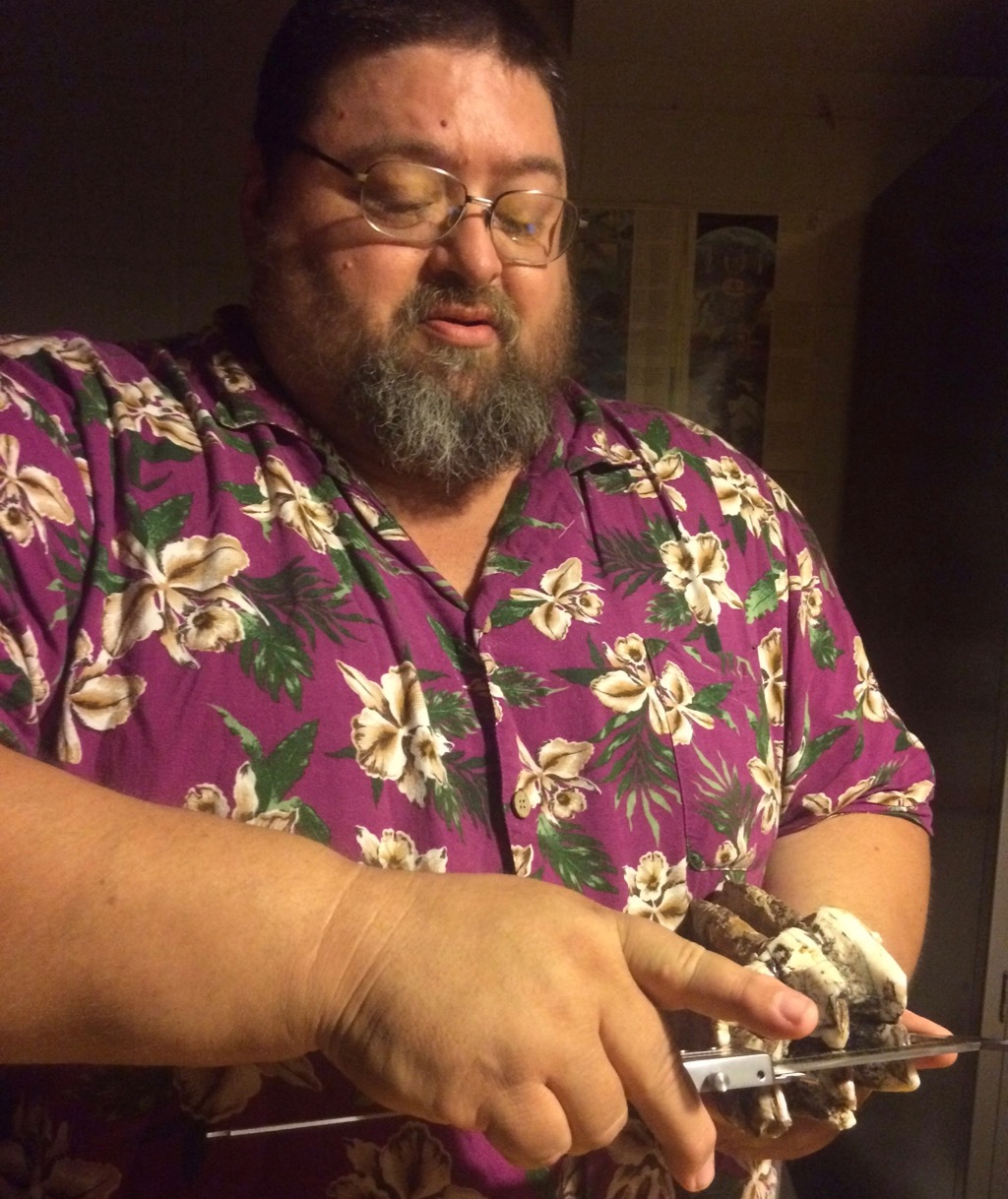 Collecting mastodon data at the Joseph Moore Museum.Finally, there are research museums such as the Western Science Center. Many research museums are operated by federal, state, or local governments (I previously worked at the Virginia Museum of Natural History, a state-funded research museum). Some, such as the Florida Museum of Natural History, are departments within research universities, which are also often state government-supported. A few, such as the American Museum of Natural History and Western Science Center, are stand-alone non-profit institutions operated in most cases by private foundations. While research museums may have different origins and associations, they all share a common feature: a permanent collection of research specimens. The primary function of these museums is to preserve the specimens and associated data that form the basis of natural science. These museums will usually have a written collections policy that defines the scope of the collection, how specimens are acquired, and how they are made available for study. The collections supersede any particular staff member; the curators and collections staff are there primarily there to support and maintain the collections, not the other way around.
Collecting mastodon data at the Joseph Moore Museum.Finally, there are research museums such as the Western Science Center. Many research museums are operated by federal, state, or local governments (I previously worked at the Virginia Museum of Natural History, a state-funded research museum). Some, such as the Florida Museum of Natural History, are departments within research universities, which are also often state government-supported. A few, such as the American Museum of Natural History and Western Science Center, are stand-alone non-profit institutions operated in most cases by private foundations. While research museums may have different origins and associations, they all share a common feature: a permanent collection of research specimens. The primary function of these museums is to preserve the specimens and associated data that form the basis of natural science. These museums will usually have a written collections policy that defines the scope of the collection, how specimens are acquired, and how they are made available for study. The collections supersede any particular staff member; the curators and collections staff are there primarily there to support and maintain the collections, not the other way around. 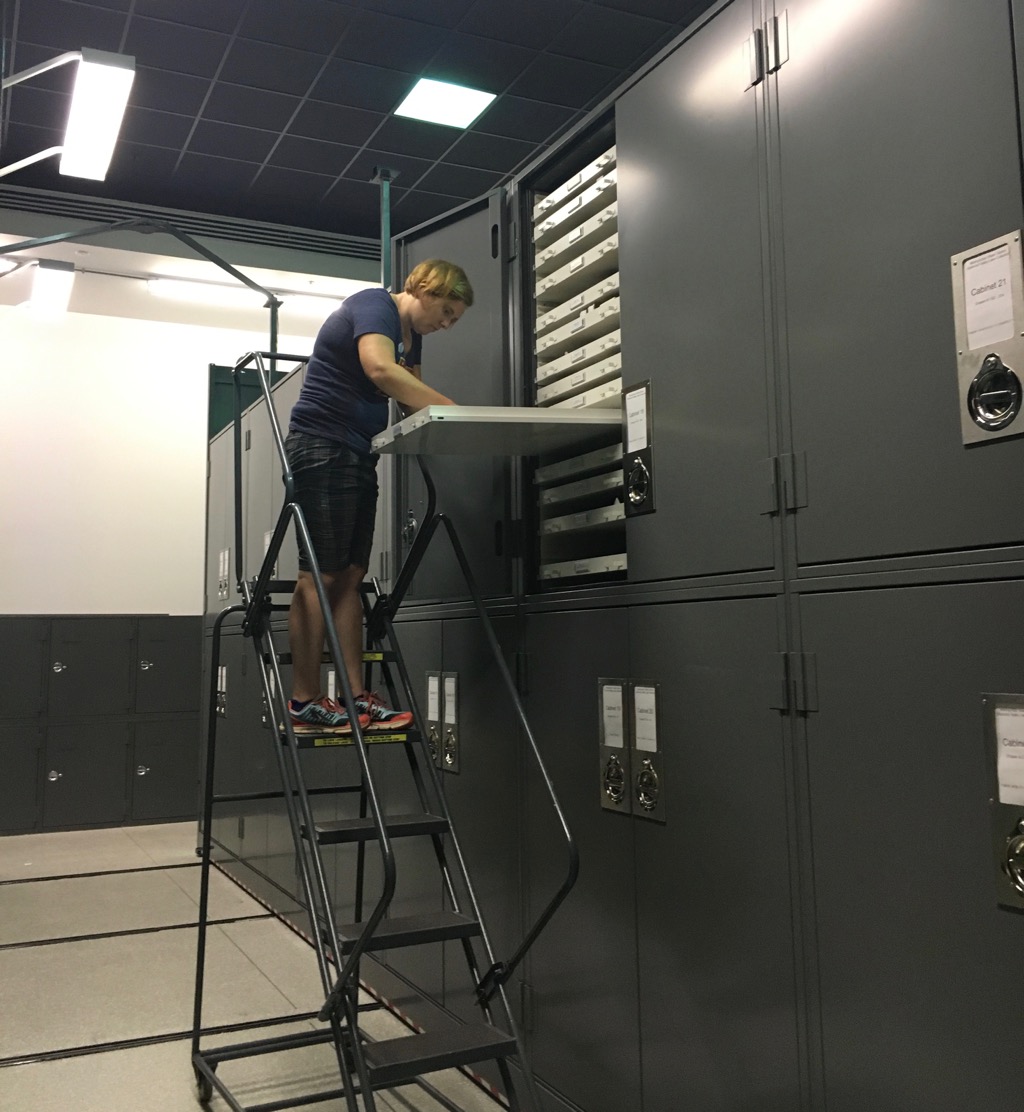 Dr. Katy Smith working in the collections repository at the Western Science Center.Specimens in a research collection are selected for their scientific value. Many of these specimens may be visually appealing, but that’s not the reason they’re acquired. In fact, the majority of a research museum’s collections are rarely if ever viewed by anyone except specialists who incorporate the data from those specimens into their research. In this respect, research museums stand apart from science education centers and teaching museums.Of course, these are broad categories that tend to merge into one another. Many museums have a close relationship with colleges, even if they aren't actually operated by a college. Some science education centers have small but significant research collections (the Boonshoft Museum of Discovery is a science education center where we collected mastodon data). Nearly all museums put a lot of effort into public education, regardless of their primary focus. Nevertheless, I'd suggest that most natural history museums tend to fall closest to one of these three categories.With such a range of missions and holdings, why are all these disparate institutions called museums? There is one feature that they all tend to share: exhibits. Even though the primary function of a research museum is maintaining collections, exhibits are a critical supporting part of that mission. To extend an analogy that a friend once suggested to me, why does a football stadium or a theatre have seats? Why do we have art galleries? All the players, actors, or artists require is a field, stage, or easel. The seats in a stadium or theatre are for everyone else – those who aren’t athletes or actors. The theatre, art gallery, and playing field are venues for non-specialists to experience these activities. Likewise, museums are the stages that scientists use to present their work to others. The vast majority of scientific research is funded, in one way or another, by the public. We have an obligation to make the fruits of our scientific endeavors available to as many people as we can, and particularly to those who pay for them.With exhibits serving as one of the significant public faces of research, it’s easy for the public to become misled about the function of museums and exhibits, particularly when the term “museum” is used for a variety of institutions. It can seem to a visitor that the only reason museums exist is to have exhibits. In the case of a science education center such as SMV, this is actually the case; they are an institution that exists to provide science education, primarily through exhibits. But the knowledge that’s imparted in SMV’s exhibits came from somewhere; someone had to collect and interpret the raw data that led to those discoveries. That was done in university and government research facilities…and in research museums. Institutions such as WSC don’t just provide the scientific knowledge described in our own exhibits, but also for the exhibits in other venues that don’t perform research or maintain collections. For research museums, we don’t acquire collections in order to supply the exhibits; rather, the exhibits exist to teach the public about the significance of our collections. All these different types of museums may share exhibits as a common point, but they perform different, yet complimentary, roles in the advancement of science.
Dr. Katy Smith working in the collections repository at the Western Science Center.Specimens in a research collection are selected for their scientific value. Many of these specimens may be visually appealing, but that’s not the reason they’re acquired. In fact, the majority of a research museum’s collections are rarely if ever viewed by anyone except specialists who incorporate the data from those specimens into their research. In this respect, research museums stand apart from science education centers and teaching museums.Of course, these are broad categories that tend to merge into one another. Many museums have a close relationship with colleges, even if they aren't actually operated by a college. Some science education centers have small but significant research collections (the Boonshoft Museum of Discovery is a science education center where we collected mastodon data). Nearly all museums put a lot of effort into public education, regardless of their primary focus. Nevertheless, I'd suggest that most natural history museums tend to fall closest to one of these three categories.With such a range of missions and holdings, why are all these disparate institutions called museums? There is one feature that they all tend to share: exhibits. Even though the primary function of a research museum is maintaining collections, exhibits are a critical supporting part of that mission. To extend an analogy that a friend once suggested to me, why does a football stadium or a theatre have seats? Why do we have art galleries? All the players, actors, or artists require is a field, stage, or easel. The seats in a stadium or theatre are for everyone else – those who aren’t athletes or actors. The theatre, art gallery, and playing field are venues for non-specialists to experience these activities. Likewise, museums are the stages that scientists use to present their work to others. The vast majority of scientific research is funded, in one way or another, by the public. We have an obligation to make the fruits of our scientific endeavors available to as many people as we can, and particularly to those who pay for them.With exhibits serving as one of the significant public faces of research, it’s easy for the public to become misled about the function of museums and exhibits, particularly when the term “museum” is used for a variety of institutions. It can seem to a visitor that the only reason museums exist is to have exhibits. In the case of a science education center such as SMV, this is actually the case; they are an institution that exists to provide science education, primarily through exhibits. But the knowledge that’s imparted in SMV’s exhibits came from somewhere; someone had to collect and interpret the raw data that led to those discoveries. That was done in university and government research facilities…and in research museums. Institutions such as WSC don’t just provide the scientific knowledge described in our own exhibits, but also for the exhibits in other venues that don’t perform research or maintain collections. For research museums, we don’t acquire collections in order to supply the exhibits; rather, the exhibits exist to teach the public about the significance of our collections. All these different types of museums may share exhibits as a common point, but they perform different, yet complimentary, roles in the advancement of science.
